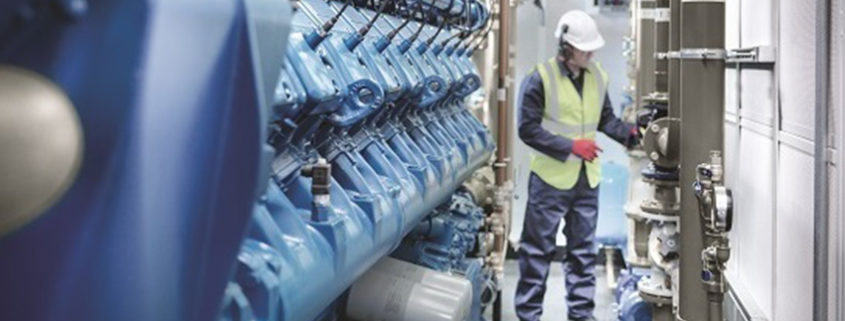Boost the reliability of your backup-power control system
Facility managers with backup-power systems are like skydivers; they can’t know if the backup actually works until they need it. Using smart devices in power-control-system panels greatly increases backup-power system reliability.
When a skydiver jumps out of a plane, he trusts his parachute will open and provide a gentle glide to earth. But just in case, he also has a “reserve” parachute as a backup. The problem is that there’s really no way to test that reserve to make sure it will work when needed. There’s no way to improve the jumper’s confidence in the reserve parachute. Whether it will work can’t be known until the ripcord is pulled following a main-chute failure.
Most facilities that rely on backup generators are in essentially the same situation. Most do regular checks of their backup-power-generation systems, regularly firing up their generators. For facilities that require the highest levels of power reliability, these system checks and “exercising” the generator are mandated. These routine checks confirm the genset is in ready-to-go condition and able to provide the required power.
What these routine checks don’t confirm is that the control systems dedicated to sensing a power loss and switching to the backup source are in good condition and operating as expected. Most facility managers are uncomfortable doing full-system tests. This would require cutting the primary power and allowing the backup to come online, which would create increased risk of a power interruption. So, like our skydiver, facilty managers take prudent precautions but are left with doubt that reserve power will be there when needed.
Small- to medium-size facilities can, however, affordably incorporate smart power-control devices, including breakers and automatic transfer switches, in their control panels. These additions can greatly increase the reliability of their backup-power systems and help ensure their genset will reliably and instantly come online when there’s a fault in the primary power.
Smarter power-control devices
The current generation of power-control devices is usually available with some level of intelligence, either integrated in the device or as an add-on. The most basic, and widely available, devices provide data that includes simple operating parameters: whether the device is on or off (open or closed) and how many cycles (operations) it has experienced. More-advanced devices may include additional asset-health parameters. They can sense and report on the kinds of loads the device is seeing. They can also report temperature, including the breaker’s internal temperature as well as the ambient temperature inside the panel.
This data can be used to trigger alarms and alerts, giving maintenance managers the opportunity to identify and proactively respond to potential problems. User-defined parameters make it possible to set desired thresholds for any of these conditions. When one of those thresholds is crossed or when there’s an issue with the device or the incoming power, the power-control device can be programmed to instantly send an alarm or alert via text or email. These alarms can be sounded at the panel in the local control room – or for cloud-connected panels, anywhere in the world. Key operations, maintenance, and engineering staff can view system data and receive alarms anytime and anywhere.
Data to drive improvements
Number of operations is one of the best ways to gauge wear and tear on a breaker or ATS. Having
this information makes it much easier for facility managers to decide when it’s time to replace or maintain a device, and help reduce the likelihood of a malfunction. But in addition to full cycles, these devices are probably seeing a number of events that fall below trip thresholds while still creating wear on the device. As utilities expand their portfolio to include more renewables and alternate fuel sources, these subtle power disruptions will continue to increase.
Beyond status and alarms, these smart devices can deliver a data stream that provides the facility managers with the ability to conduct a variety of analyses. Reports identifying recurring power-quality problems can point to corrective actions, whether internally or related to the power provider. Energy usage can be measured and tracked, making it possible to implement energy-efficiency measures, reducing energy costs.
And asset health data from the backup-power control system makes it possible to do smart maintenance. Regular but often unnecessary preventive maintenance can be replaced by a predictive maintenance strategy. Rather than routinely inspecting or servicing devices, system generated data helps identify when maintenance is actually needed.
Invest in higher reliability
Backup-power-system failures aren’t common; but when they happen, they are always frustrating, usually costly, and can be devastating. When purchasing backup-power systems and/or the control panels for these systems, price is often the primary driver in the selection process.
For a small incremental cost, it may be advantageous for small-to-medium facilities to specify intelligent breakers, automatic transfer switches, and other smart devices in their power-control panels. The small premium paid will deliver increased confidence that the backup-power control system is always in ready-to-run condition and will come online when needed. As an added bonus, it will also provide tools and information to more effectively maintain the system and more efficiently use power.
Kevin P. Jordan
ABB Ability(TM)
Market Development Manager, Electrification – Smart Power
ABB Electrification Business




